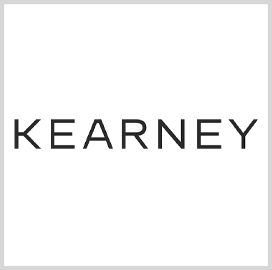Finding the “Truth” in Your Operations
We often hear about “one version of the truth”—the one source for operating data that everyone in a company agrees is the real, trusted number with which to plan and measure performance. Without this definitive information, people spend a lot of time arguing about the validity of numbers, the impact of a challenge or opportunity, and the cause of issues and/or breaks in processes. One version of the truth is hard to come by for many companies.
This isn’t about audited, public numbers like revenue and net income. It’s about operating data—the kind that reveals if you have product in stock, fulfilled an order, or met a customer service agreement. With today’s growing use of dashboards by large groups of employees, and the focus on managing through key metrics, having one version of the truth is becoming more important. So what is standing in the way?
- Organizational silos, each with different tools, methodologies, and metrics
- Disparate systems with little real-time data
- A status quo mentality.
The following three case studies demonstrate how organizations across various different industries broke through these barriers to create a standardized framework and an acknowledged, one version of the truth, to improve operational performance.
Commercial Bank
One large national bank comes to mind. It was struggling with finding the “truth” in its reporting, and had a long-term vision to be leaner operationally, with the ability to adapt to changing needs of the environment and customers. However, it became aware that there were intrinsic behavioural problems, and a gap between actual performance versus what was being reported through system and department KPIs. It had a number of disparate reporting tools, which had been built in house and were ineffective in different aspects—especially around capacity planning and measuring employee productivity. Managers of different teams, divisions, and departments also had different approaches for calculating metrics, making it hard to aggregate data for one universal view to manage the organization holistically. The company realized that to move to the next level of performance—to get to a holistic capacity plan based on true demand and actual throughput—it needed to shift the way it measured volumes, service levels, and throughput. It went from internally-focused, siloed metrics for each group to more universal metrics focused on achieving customer or organizational goals. Not an easy task to undertake.
Visibility in the Back-Office
The bank realized it needed greater visibility into day-to-day operations so it could better identify operational inefficiencies, a daunting endeavour given the highly complex back-office operations model and the internal, misguided perception that it was performing well. The bank identified the employee desktop as one trusted source of metrics for this increased visibility. The majority of work performed in the operations was done on the desktop, but the challenge was how to capture that. It implemented an analytics tool to capture, track, and measure employee activity at the desktop across different systems, applications, and processes.
By generating a single interface to aggregate and present metrics for work processed across functions, the bank was able to build an accurate picture of who is processing what, when, and how effectively. The metrics have become the bank’s new “truth” by which it measures its performance, and unified the different approaches taken by managers to gather, calculate, and report metrics. Why is this important? The bank now has the ability to be more nimble and act on data much quicker than before to better manage the business. It has key intraday and same-day volume and production metrics that were inaccessible previously and can see this data 100 percent sooner.
Managers benefit because they are no longer functioning as manager and reporting analysts. They have recaptured almost 20 percent of their time, applying this towards running the business and coaching employees. Employee productivity and morale improved by five percent, just by giving them visibility into their production metrics. They can take ownership of their performance and feel more confident that their contributions are being equitably measured.
The bank is moving to a leaner, more agile operating model with an agreed upon source of “truth” for its performance reporting and assessment. By gaining visibility into the day-to-day operations, capturing data at the desktop, and feeding that data into a standardized framework for performance reporting and enterprise workforce management, the bank can focus management time on generating revenues, servicing customers, and coaching employees to new levels of performance, and less time on manually creating reports, hunting for efficiencies, and operating under the misperception of good performance.
HR Outsourcer
This professional employment organization and HR services outsourcer struggled with managing seasonal peaks, resorting to excessive overtime and temporary help to manage demand. It recognized that shifting resources between their contact centers and back-office areas, which handle and process 401Ks, payroll issues, retirement, and COBRA benefits, could help them more cost effectively manage demand fluctuations. But in order to share resources it needed a single source of data across contact centers and back-office operations to get insight into the types and volume of work being handled, forecasted demand and true capacity needs.
Breaking Down Silos
At first, the HR outsourcer met with a lot of resistance as managers for the various areas each had their own way of doing things. Managers had to be educated on the value of unifying the tools they used to manage workloads and employees, and shown how the new approach and one version of the truth would enable them to achieve their own goals, while ultimately helping the company better serve its clients. The consistency across sites and functions added stability, increased accuracy, and enabled the company to handle a larger amount of work items for their clients’ customers with the same number of people – saving one client $100,000.
Improving Employee Effectiveness and Customer Service
In addition to improving the bottom line, the HR outsourcer also wanted to drive the performance of their employees and let the employees know that they made a difference. Using the same performance data, it employed enterprise performance scorecards that displayed for the employee role-specific key performance metrics, and an aggregated dashboard for managers and the executive suite. The performance scorecards allowed the outsourcer to effectively measure front and back end productivity, even if an individual switched between functions. It allowed them to redeploy resources based on what the true needs of the work were, and still track key measures such as quality, adherence, productivity and customer survey scores. They were able to deploy the right people in the right places at the right time to get the work done. One source of the truth and a standardized framework for managing performance saved the outsourcer $300,000 in overtime in the first year, increased customer satisfaction scores, and gave its employees the confidence that the company was invested in developing their skill sets and their success.
An added benefit of this one source of the truth and standardized framework was that the outsourcer, for the first time, was able to generate cost-to-serve reporting by customer and product line. It can compare how much it costs to handle customer A versus customer B, assess which customer types are profitable versus which aren’t, and which lines of business are profitable for them as a company. Senior leadership now has a decision making tool to help them determine which products to offer to whom.
Global Insurance Company
Another large insurance company looked to find one source of the truth in order to support its corporate operational excellence and cost-reduction initiatives. The insurer had created a shared services group which, among many directives, was charged with creating a global, standardized performance management framework and consistent metrics that would help it break down silos between its many companies, functions and locations. The capture and reporting of activity data was often manual and self-reported, creating doubt and mistrust as to the accuracy of the data. Reports were manually compiled by managers and reviewed after the fact on a weekly basis at best, but often on a monthly basis. The backwards only view and time delays made it very difficult to effectively institute corrective actions or coach employees, as there was no drill-down capabilities to find root cause of issues.
Enterprise Performance Management
The insurer implemented an enterprise performance management solution that captured activity data directly from the desktop, creating their one source of the truth and eliminating the doubt created by self-reporting. The solution, which includes individual and team-based scorecards, as well as executive dashboards, is dynamically updated, so trends impacting productivity and service can be flagged in enough time to take corrective actions. In addition, as the same framework and measurement system is deployed across the organization, it is helping instill a culture of operational excellence, with the insurer experiencing greater processing consistency and productivity. Specifically, they’ve seen a 36 percent increase in time spent in production applications, and a dramatic decrease in time spent on non-production-related activities, saving them over $9 million USD.
Three Companies, One Source of the Truth
Ultimately, the bank, HR outsourcer, and insurance company made a commitment to provide its management team and employees with the tools and disciplines needed to be successful in their roles, break down silos and meet organizational goals. Investing in tools to help make individual managers and employees successful is a unique perspective in the work environment today, where we are continually asked to do more with less. It’s a question every organization should consider—how committed are you to setting your team up for success? Start today by looking at your organization and determine how to create one source of truth. Your operations teams and customers will appreciate the value it brings them.
 Nicole Nevulis, is Senior Manager, Global Back Office Workforce Optimization Practice, Verint Systems. As a pioneer in the use of Workforce Optimization philosophies and software in back office operations, she currently provides leadership to colleagues and partners in order to enable global resources to appropriately support presales and implementation process.
Nicole Nevulis, is Senior Manager, Global Back Office Workforce Optimization Practice, Verint Systems. As a pioneer in the use of Workforce Optimization philosophies and software in back office operations, she currently provides leadership to colleagues and partners in order to enable global resources to appropriately support presales and implementation process.







